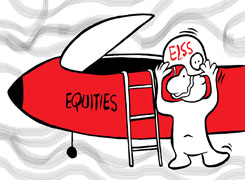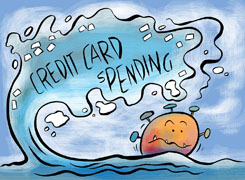Sanjeev Govila | Answer |Ask -Follow
Financial Planner - Answered on Aug 09, 2023
He has over 12 years of experience in financial planning and is a SEBI certified registered investment advisor; he is also accredited with AMFI and IRDA.... more

I have multiple loan with outstanding of 32 lakhs. My salary is 1.3L pm and paying emi of 82k.Not able to figure it out how to get out this debt trap
Strategy to get out of debt trap
1. Debt Consolidation: This is streamlining your debts for clarity. Debt without consolidation is like juggling a bunch of puzzle pieces while presuming that you’re in control. Merge your scattered debts into one manageable loan, reducing confusion and the risk of missing payments. This smart move can lead to lower interest rates and simplified monthly payments, giving you a clearer path out of the debt maze.
2. Debt Avalanche Strategy: This strategy treats your debts as mountains and tells you to start climbing the steepest ones first, that is, tackling the highest peaks first and the lower peaks will then automatically become a cake-walk. So, with this strategy, you focus on the high-interest loans while making minimum payments on others. As you conquer one peak after another, your momentum builds, and soon you'll find yourself on the summit of debt-free living.
3. Credit Card Balance Transfer: IN this strategy, you swap the high-interest credit card debts for friendlier ones. Through a balance transfer, you move your existing credit card debt to a new card with lower interest, that is, shifting to a smoother terrain. This gives you breathing room to pay off the principal without being weighed down by sky-high interest.
4. Practical Tips to Conquer Debt:
1. Budget with Purpose: Lay out a clear budget that allocates extra funds to debt repayment while covering essentials.
2. Cut Unnecessary Expenses: Trim down on luxuries, and redirect the saved money towards settling your debts faster.
3. Build an Emergency Fund: Having a financial safety net prevents you from resorting to more debt during unexpected setbacks.
4. Negotiate with Lenders: Reach out to your lenders for potential interest rate reductions or extended payment plans.
5. Financial Windfalls: Put unexpected bonuses, tax refunds, or gifts towards debt reduction to accelerate your progress.
Remember, Rome wasn't built in a day – the same applies to debt repayment. By combining strategic methods and prudent financial habits, you can pave the way to a debt-free horizon.
You may like to see similar questions and answers below
Ramalingam Kalirajan |10902 Answers |Ask -Follow
Mutual Funds, Financial Planning Expert - Answered on Oct 08, 2024
Ramalingam Kalirajan |10902 Answers |Ask -Follow
Mutual Funds, Financial Planning Expert - Answered on Jan 02, 2025
Ramalingam Kalirajan |10902 Answers |Ask -Follow
Mutual Funds, Financial Planning Expert - Answered on Jun 20, 2025
Naveenn Kummar |236 Answers |Ask -Follow
Financial Planner, MF, Insurance Expert - Answered on Sep 11, 2025
Ramalingam Kalirajan |10902 Answers |Ask -Follow
Mutual Funds, Financial Planning Expert - Answered on Dec 02, 2025
Samraat Jadhav |2514 Answers |Ask -Follow
Stock Market Expert - Answered on Dec 18, 2025
Reetika Sharma |432 Answers |Ask -Follow
Financial Planner, MF and Insurance Expert - Answered on Dec 18, 2025
Reetika Sharma |432 Answers |Ask -Follow
Financial Planner, MF and Insurance Expert - Answered on Dec 18, 2025
Reetika Sharma |432 Answers |Ask -Follow
Financial Planner, MF and Insurance Expert - Answered on Dec 18, 2025
Samraat Jadhav |2514 Answers |Ask -Follow
Stock Market Expert - Answered on Dec 18, 2025

Kanchan Rai |648 Answers |Ask -Follow
Relationships Expert, Mind Coach - Answered on Dec 18, 2025
Kanchan Rai |648 Answers |Ask -Follow
Relationships Expert, Mind Coach - Answered on Dec 18, 2025
Anu Krishna |1754 Answers |Ask -Follow
Relationships Expert, Mind Coach - Answered on Dec 18, 2025
Anu Krishna |1754 Answers |Ask -Follow
Relationships Expert, Mind Coach - Answered on Dec 18, 2025
Anu Krishna |1754 Answers |Ask -Follow
Relationships Expert, Mind Coach - Answered on Dec 18, 2025

























